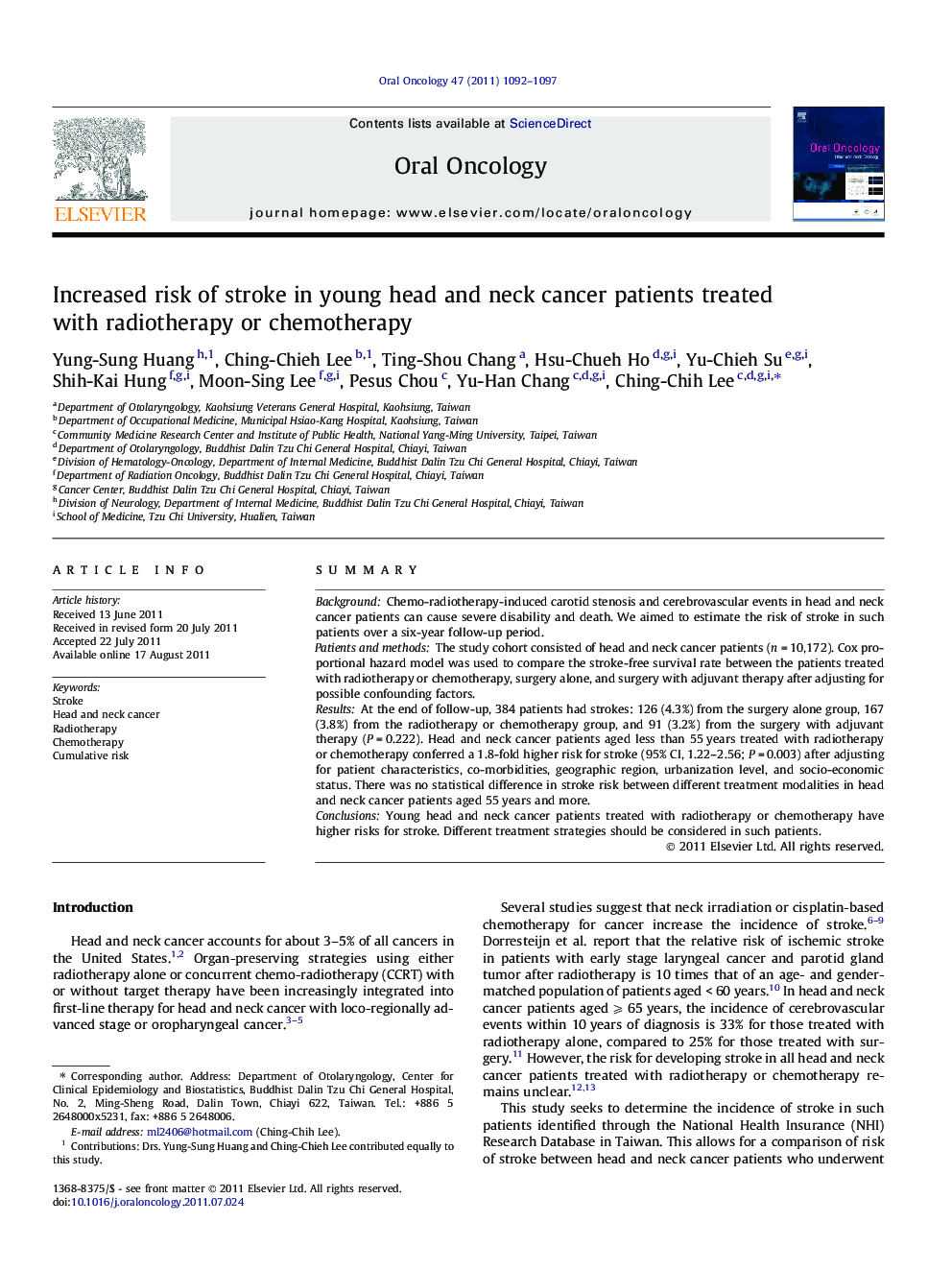| Article ID | Journal | Published Year | Pages | File Type |
|---|---|---|---|---|
| 3164485 | Oral Oncology | 2011 | 6 Pages |
SummaryBackgroundChemo-radiotherapy-induced carotid stenosis and cerebrovascular events in head and neck cancer patients can cause severe disability and death. We aimed to estimate the risk of stroke in such patients over a six-year follow-up period.Patients and methodsThe study cohort consisted of head and neck cancer patients (n = 10,172). Cox proportional hazard model was used to compare the stroke-free survival rate between the patients treated with radiotherapy or chemotherapy, surgery alone, and surgery with adjuvant therapy after adjusting for possible confounding factors.ResultsAt the end of follow-up, 384 patients had strokes: 126 (4.3%) from the surgery alone group, 167 (3.8%) from the radiotherapy or chemotherapy group, and 91 (3.2%) from the surgery with adjuvant therapy (P = 0.222). Head and neck cancer patients aged less than 55 years treated with radiotherapy or chemotherapy conferred a 1.8-fold higher risk for stroke (95% CI, 1.22–2.56; P = 0.003) after adjusting for patient characteristics, co-morbidities, geographic region, urbanization level, and socio-economic status. There was no statistical difference in stroke risk between different treatment modalities in head and neck cancer patients aged 55 years and more.ConclusionsYoung head and neck cancer patients treated with radiotherapy or chemotherapy have higher risks for stroke. Different treatment strategies should be considered in such patients.
